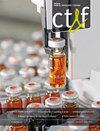硬葡聚糖提高采收率的生物降解及毒性研究
IF 0.5
4区 工程技术
Q4 ENERGY & FUELS
引用次数: 0
摘要
聚合物驱包括向储层注入聚合物增强水,以控制水-油流度比,从而与水驱相比提高了体积波及效率。合成聚合物(聚丙烯酰胺)和生物聚合物(硬葡聚糖、黄原胶、裂茶树胶)是两类聚合物,通常用于提高采收率(EOR)。硬葡聚糖(SCG)耐电解质、水解、pH(3-10)和温度(30-100℃),具有显著的流变性能,但很容易被微生物降解。本研究的主要目的是评估SCG在注射和生产过程中的生物降解及其水生毒性。通过溶液粘度的变化确定SCG溶液的厌氧生物降解,通过SCG浓度的变化计算好氧生物降解。结果表明,由于细菌对生物聚合物的代谢作用,SCG溶液的粘度降低了30%,SCG浓度从100 ppm降低到52 ppm。生态毒理学试验采用水蚤(Daphnia Pulex)、针叶水蚤(Scenedesmus Acutus)和Oreochromis sp.。急性生态毒理学生物分析表明,没有证据表明SCG对三种生物中的任何一种有急性毒性作用。慢性生态毒理学生物试验表明,无论SCG浓度如何,SCG对水蚤的死亡率没有影响。本文章由计算机程序翻译,如有差异,请以英文原文为准。
Biodegradation and toxicity of scleroglucan for enhanced oil recovery
Polymer flooding consists of injecting polymer-augmented water into the reservoir to control the water-oil mobility ratio, resulting in an increase in the volumetric sweep efficiency compared to water flooding. Synthetic polymers (polyacrylamides) and biopolymers (scleroglucan, xanthan gum, schizophyllan) are the two families of polymers usually evaluated for enhanced oil recovery (EOR). Scleroglucan (SCG) is resistant to electrolytes, hydrolysis, pH (3-10) and temperature (30-100°C) and has remarkable rheological properties, but it is quite susceptible to microbiological degradation. The primary objective of this study was to evaluate the biodegradation of SCG in the injection and production processes and its aquatic toxicity. The anaerobic biodegradation of the SCG solutions was determined through the viscosity changes of the solutions, while the aerobic biodegradation was calculated with the changes in the SCG concentration. It was observed that the viscosity reduction of the SCG solution was 30% and the SCG concentration decreased from 100 ppm to 52 ppm because bacteria can metabolize the biopolymer. Daphnia Pulex, Scenedesmus Acutus and Oreochromis sp. were the organisms used in the ecotoxicological assays of the SCG solutions. The acute ecotoxicological bioassays showed that there was no evidence of acute deleterious effects of SCG on any of the three organisms. From the chronic ecotoxicological bioassays, it was concluded that there was no effect of SCG on the mortality of Daphnia Pulex, regardless of the tested SCG concentration.
求助全文
通过发布文献求助,成功后即可免费获取论文全文。
去求助
来源期刊

Ct&f-Ciencia Tecnologia Y Futuro
Energy-General Energy
CiteScore
1.50
自引率
0.00%
发文量
7
审稿时长
>12 weeks
期刊介绍:
The objective of CT&F is to publish the achievements of scientific research and technological developments of Ecopetrol S.A. and the research of other institutions in the field of oil, gas and alternative energy sources.
CT&F welcomes original, novel and high-impact contributions from all the fields in the oil and gas industry like: Acquisition and Exploration technologies, Basins characterization and modeling, Petroleum geology, Reservoir modeling, Enhanced Oil Recovery Technologies, Unconventional resources, Petroleum refining, Petrochemistry, Upgrading technologies, Technologies for fuels quality, Process modeling, and optimization, Supply chain optimization, Biofuels, Renewable energies.
 求助内容:
求助内容: 应助结果提醒方式:
应助结果提醒方式:


